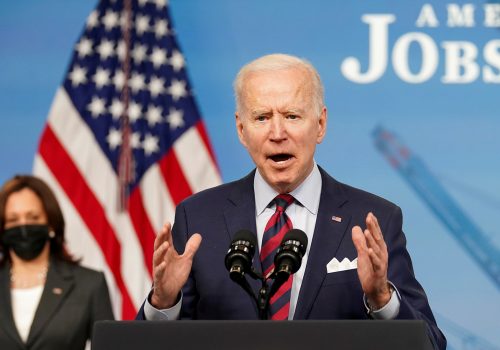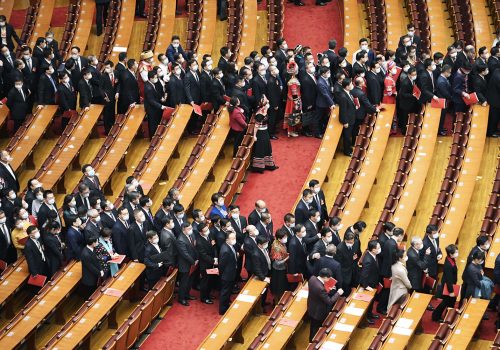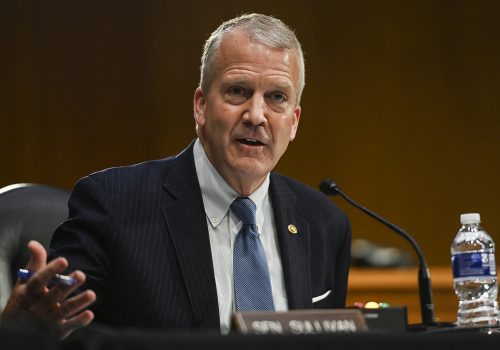Reading between the lines of the US intelligence community’s latest reports
In recent days the US Director of National Intelligence (DNI) has released two key reports: its Annual Threat Assessment (ATA) and the National Intelligence Council’s quadrennial analysis of longer-term trends and scenarios, Global Trends 2040 (GT 2040). Between 2005 and 2012, I pieced together the Annual Threat Assessment, both its classified and unclassified versions, from the many inputs provided by centers and offices across the intelligence community (IC). I also was the principal author during that same period of three different Global Trends editions used by the Bush and Obama administrations.
It’s with mixed emotion that I’ve been reading the latest versions of the two products I worked on. I wouldn’t be human if I did not admit to some grim satisfaction in being proved right. This year’s ATA labels China a near-peer competitor while GT 2040 foresees a possible military clash between the United States and China. Back in 2005, Global Trends 2020—the first edition I worked on—warned that China would not be like Japan and integrate itself into a Western-led liberal order. Like other great powers in history, China would instead insist on being a rule-maker. It’s hard to imagine today, but many China experts at the time did not see Beijing throwing off former Chinese leader Deng Xiaoping’s dictum of hiding his nation’s light in a barrel. The second-term George W. Bush administration was far more worried about terrorism and the war in Iraq than about China threatening the US position in the world. And our not-so-subtle effort to bury the discussion of terrorism in the back of the report while starting with a discussion of China and India did not get the attention we had hoped.
“Multipolarity” was also a taboo subject along with US “relative decline” until we snuck them into 2008’s Global Trends 2025. Thankfully, this year’s ATA highlights the efforts by Beijing, Moscow, Tehran, and Pyongyang “to advance their interests at the expense of the United States and its allies.” The decision to group together several different countries working against the United States in the ATA’s opening lines suggests that they are engaging in some coordinated effort, although the rest of the text never gets around to developing that theme.
My other emotion, more as an American than an intelligence professional, is worry. What does it say about our system of government that hard truths are not absorbed? I am glad that this year’s ATA and GT 2040 are blunt about the challenges facing the United States. But I wish that the warnings about an independently minded China, particularly in Global Trends, had been heeded a decade or more ago, when there was good reason to worry.
There are other shortcomings in the ATA format, which is structured as a laundry list of threats and allows little room for exploring how the threats compound one another. Instead, the ATA seems to be designed for letting the public know the priority of threats in the IC’s mind. When I drafted the report, terrorism and proliferation of weapons of mass destruction topped the list. Now China is first and terrorism takes a real back seat, coming at the end of transnational threats such as climate change, cyber, and migration. But there is little in the ATA that leans forward—and practically nothing on US capabilities to deal with these threats. That’s of course the business of policymakers, including Congress.
Even in my day, the ATA drew attention to global security challenges, talking about climate change—a brave undertaking during Republican administrations—plus others such as transnational organized crime and health. Both the ATA and GT 2040 are strong on these challenges, pointing to the complexities of solving them without widespread cooperation.
Several of the DNIs I worked with lamented that the ATA did not lead to a broader public discussion of where the world was headed and how best to position the United States in it. Congressional questions were seen as self-serving—emphasizing favored issues of individual members—or sometimes “gotcha” moments, intended to embarrass the DNI or catch the DNI off guard. In 2015, for example, then-DNI James Clapper had to apologize for excluding references to Iran’s terrorist activities from that year’s ATA.
If the ATA is like a thermometer telling you the current temperature of the global security environment, Global Trends should be closer to a barometer, helping you decide how much time you should spend awake at night worrying about the forecast. Over the course of my time in the IC, the long-term weather grew increasingly uncertain. When Global Trends was conceived in the mid-1990s, we considered it sufficient to focus on trends where US leadership was assured. A decade later, we realized that change, not continuity, was the dominant dynamic in how the world was evolving—and that future scenarios should be the core of the report. Trends can set parameters around what could happen, but there was so much variability between the “could” and “would” and US leadership could no longer be taken for granted.
Scenarios are hard to get right. I can think back to some home runs, such as the one envisioning a caliphate years before ISIS put it into practice, which was featured in Global Trends 2020. There was also the “Pax Americana” scenario in the same 2005 report, in which an American president must deal with a public turned off by the United States being the world’s policeman. But there were others that were not as prescient.
This year’s Global Trends has five scenarios exploring in an almost mechanical way all the possible permutations in Western relations with China: the United States and democracy winning, competitive coexistence, global drift, separate silos, and a possible rebirth of the multilateral order after a climate catastrophe. It’s a shame that those who compiled the report did not pick one of the global challenges—such as climate change, food insecurity, or another pandemic—and delve far deeper into its potential ramifications than they did in scenarios such as “Tragedy and Mobilization,” which uses climate change and global famine as a prop to explain how global cooperation could reassert itself. It would have been better to paint a picture of how these challenges could radically change humanity. Thinking back to pre-pandemic days, did anybody anticipate how technology would rule our lives? Why not include a scenario speaking to whether humans will be empowered or disempowered by the spread of artificial intelligence—rather than just whether the United States or China come out on top?
In the end, the crucial question is how the Biden administration and Congress use these reports. Whatever their faults, both studies could serve to lift policymakers’ eyes above the crisis du jour and plan for a better future. The United States no longer has the margin for error that it once did. For the past two decades, beginning with the 9/11 attacks, the US has suffered a string of shocks and unwelcome surprises as the world has changed in unexpected and radical ways. For Americans, the world is no longer our oyster. We must learn how to navigate this difficult terrain and, in so doing, reinvent ourselves. Envisaging different scenarios for how this new world could evolve is a proven way to take that first step.
Mathew J. Burrows is the director of the Atlantic Council’s Foresight, Strategy, and Risks Initiative in the Scowcroft Center for Strategy and Security. Follow him on Twitter @matburrows.
Further reading
Image: Clouds form over the U.S. Capitol in Washington, U.S. September 29, 2020 via REUTERS/Erin Scott.


